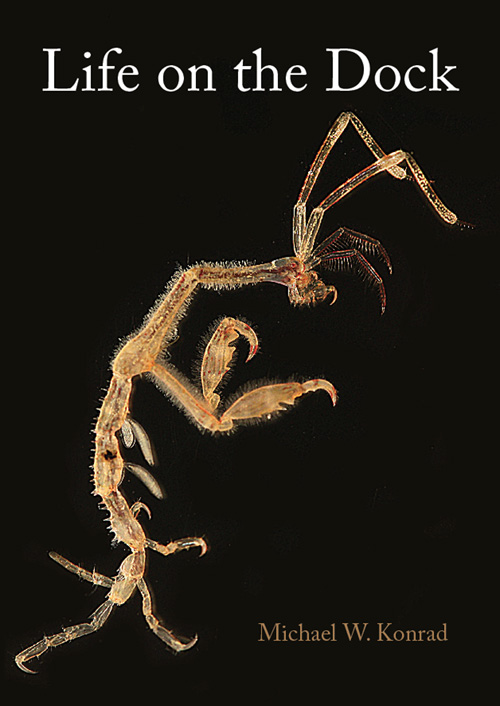
|
"Life on the Dock", a book by Michael Konrad, USA |
I live in Sausalito, a small town just North of San Francisco, California. During the last five years I have been observing the animals and plants that live on floating docks. This type of dock is ideal for small yachts on an estuary or bay, since typical tidal ranges of 1-3 m (3-9 feet) make it difficult to moor a boat to a fixed dock.
While a few organisms are large, e.g. harbor seals and gulls, most are small. In order to see and appreciate them you need a microscope. The ideal microscope for most of these adventures is a dissecting microscope, preferably one with zoom magnification and the ability to mount a camera. As I collected images and learned more about marine life I realized that I had enough material to write a book, and so I wrote a book. It is titled "Life on the Dock" and is available through Amazon.com. The "Look inside the book" feature is available for this book, so you can see it for yourself. Thus I haven't attached any images except for the cover of the book (the animal is a skeleton shrimp, a crustacean in the family Caprellidae).

Several themes of the book relevant to Micscape readers:
1. In the ocean there are more small organisms than large, the total mass of small organisms is larger, and diversity becomes larger as size decreases. This means that you can't really appreciate marine life without a microscope.
2. To survey marine life on the dock you ideally need to cover a range of size from about 100 to 0.1 mm, a range of 1000.
a. A macro lens directly connected to a camera can handle the large objects. I use a Canon 5D (a full frame 24x36 mm camera) with a 100 mm macro, that can focus down to a 1:1 subject to image ratio. With this combination I can get good images of objects down to a size of 5 mm or smaller.
b. I use the modestly priced Meiji EMZ trinocular dissecting microscope for smaller objects. It has a magnification range of 1-7x, but a 2.5x "photo-eyepiece" (the lowest magnification available from Meiji) comes before the camera. However, Meiji provides 0.5x and 2x auxiliary lenses. Thus, the lowest overall magnification is 1x2.5x0.5=1.25x. In this configuration it takes over where the macro lens ends its usefulness. The highest magnification available with maximum zoom and the 2x auxiliary lens is 7x2.5x2=35x. At this magnification a 0.1 mm object would fill the camera field of view. I have never wanted to use more than this magnification.
2. The main difficulty in getting good images of marine life is obtaining adequate light, good contrast, and freezing motion. This usually means controlled lighting at an oblique angle. Thus, most of my photographs were obtained by collecting clumps of organisms from the dock, bringing them home to an aquarium, and then setting up the best lighting by tedious trial and error. A dual LED light by Unitron has been effective for animals that don't move rapidly. A ring flash from Canon has been invaluable for moving animals (and most move).
3. The last chapter of the book is an introduction to the professional literature, and suggestions for using the Internet. It encourages "amateurs" to become a part of the biological community.
All comments to the author Michael Konrad are welcomed.
Microscopy UK Front
Page
Micscape
Magazine
Article
Library
Please report any Web problems or offer general comments to the Micscape Editor .
Micscape is the on-line monthly magazine of the Microscopy UK website at Microscopy-UK .